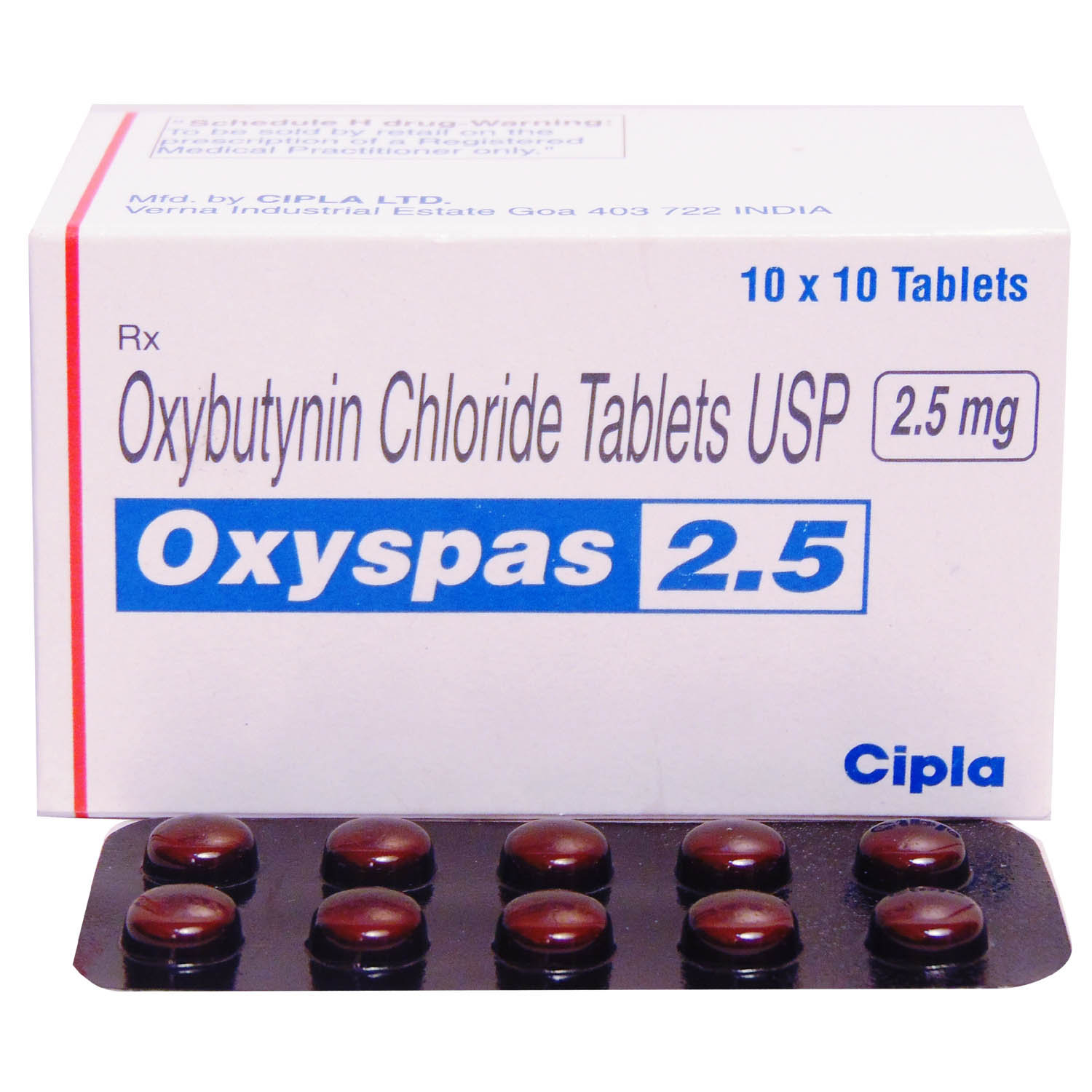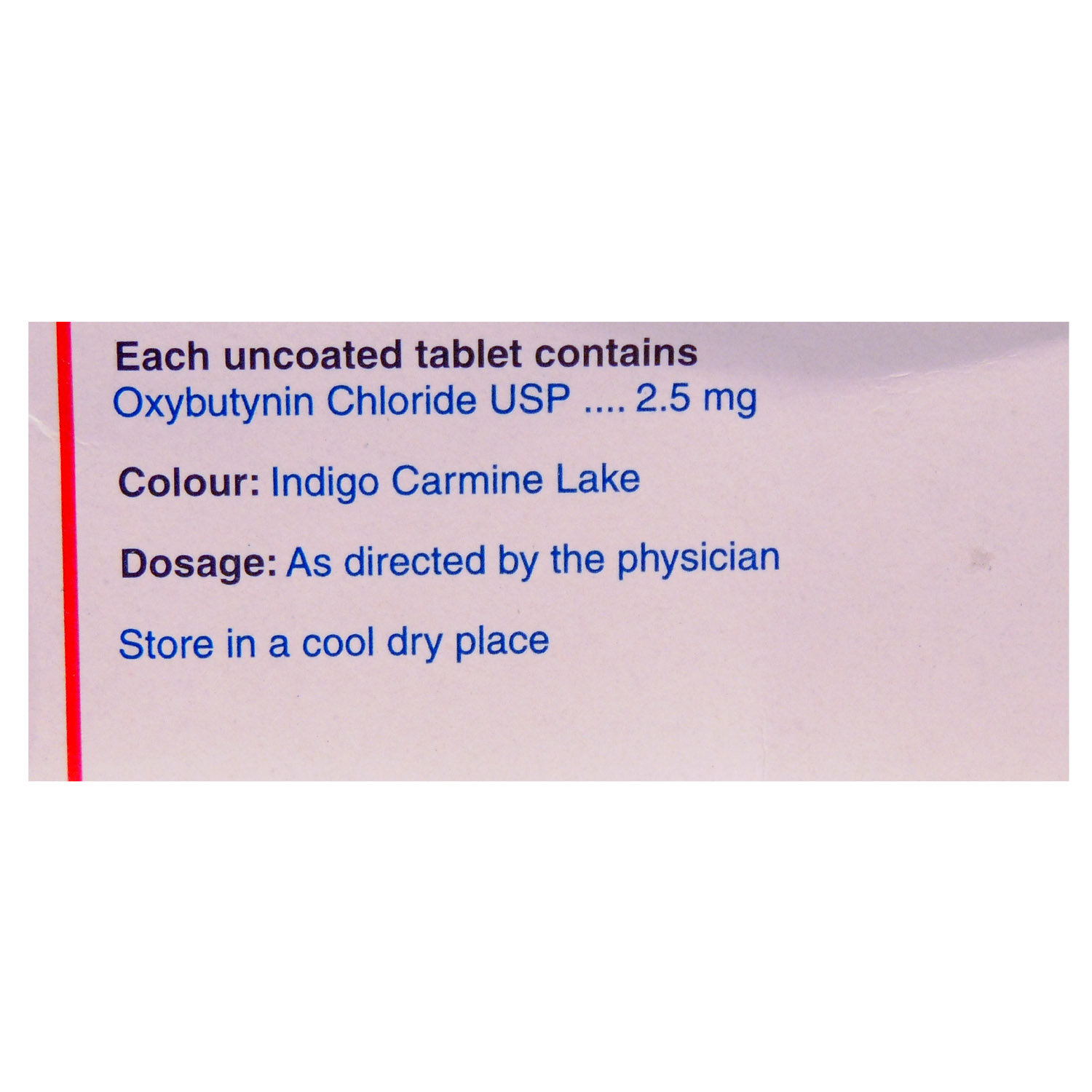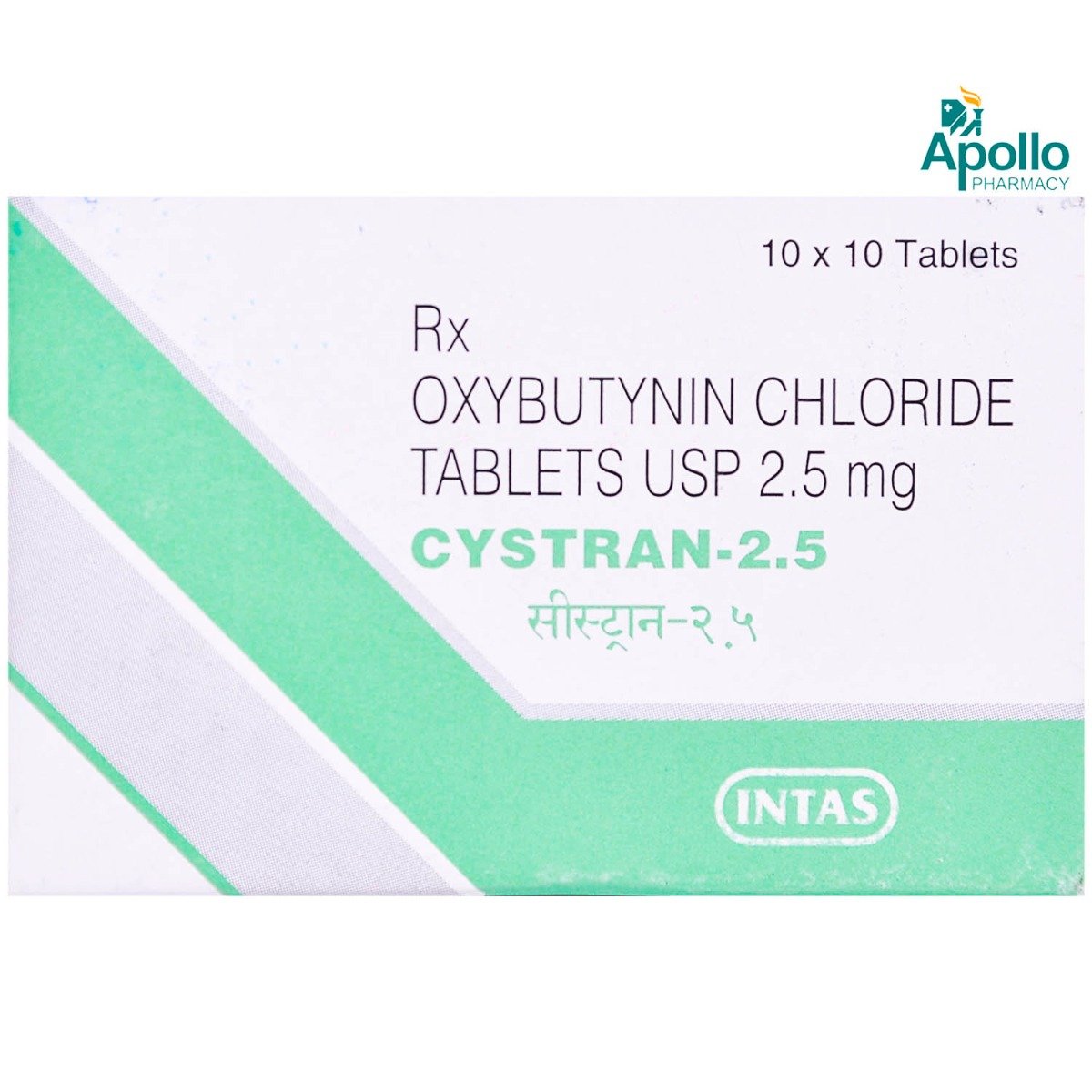Oxyspas 2.5 Tablet



MRP ₹122
(Inclusive of all Taxes)
₹18.3 Cashback (15%)
know your delivery time
Provide Delivery Location
Composition :
Manufacturer/Marketer :
Consume Type :
Expires on or after :
Return Policy :

Secure Payment

Trusted by 8 Crore Indians

Genuine Products
Therapeutic Class
Country of origin
Manufacturer/Marketer address
Author Details
We provide you with authentic, trustworthy and relevant information
Disclaimer
Alcohol
Safe if prescribed
You are recommended to avoid alcohol consumption while taking Oxyspas 2.5 Tablet . Alcohol intake, along with Oxyspas 2.5 Tablet , may cause increased drowsiness.
Pregnancy
Consult your doctor
Oxyspas 2.5 Tablet belongs to pregnancy category B. Please consult your doctor if you have any concerns regarding this; your doctor will prescribe you Oxyspas 2.5 Tablet only if the benefits outweigh the risks.
Breast Feeding
Consult your doctor
Oxyspas 2.5 Tablet may pass into breastmilk. Please consult your doctor if you have any concerns regarding this; your doctor will decide whether breastfeeding mothers can take Oxyspas 2.5 Tablet or not.
Driving
Safe if prescribed
Oxyspas 2.5 Tablet may cause dizziness, drowsiness, sleepiness, and blurred vision. Do not drive or operate heavy machinery unless you are alert.
Liver
Consult your doctor
Please consult your doctor before taking Oxyspas 2.5 Tablet if you have a liver impairment or any concerns regarding this.
Kidney
Consult your doctor
Please consult your doctor before taking Oxyspas 2.5 Tablet if you have kidney impairment or any concerns regarding this.
Children
Safe if prescribed
Oxyspas 2.5 Tablet can be given to children above 5years if prescribed by the doctor.
Product Substitutes
About Oxyspas 2.5 Tablet
Oxyspas 2.5 Tablet belongs to the group of medicines called anti-spasmodic, and anti-cholinergic agents used to treat overactive bladder (OAB) with symptoms of urinary incontinence (urine leakage), urgent or frequent urination, increased night-time urination, dysuria (painful or difficult urination). Additionally, Oxyspas 2.5 Tablet is used to treat night-time bed-wetting in children above 5 years when other treatments have not worked.
Oxyspas 2.5 Tablet contains 'Oxybutynin', which works by blocking the release of a chemical transmitter called acetylcholine, responsible for bladder muscle contractions. Thereby relaxing the smooth muscles of the urinary bladder and stopping sudden muscle spasms (contractions). This helps control urine by delaying the initial desire to empty the bladder and increases the urine holding capacity of the bladder.
You are advised to take Oxyspas 2.5 Tablet for as long as your doctor has prescribed it for you, depending on your medical condition. In some cases, you may experience certain common side-effects such as dizziness, sleepiness, headache, facial flushing, constipation, dry mouth, dry skin, urinary retention, and diarrhoea. Most of these side-effects do not require medical attention and will resolve gradually over time. However, you are advised to talk to your doctor if you experience these side-effects persistently.
Consult your doctor if you are pregnant or breastfeeding; your doctor will prescribe only if the benefits outweigh the risks. Oxyspas 2.5 Tablet may cause dizziness, drowsiness, sleepiness, and blurred vision; so drive only if you are alert. Oxyspas 2.5 Tablet should not be given to children below 5 years as safety and efficacy have not been established. Avoid consuming alcohol along with Oxyspas 2.5 Tablet as it could lead to increased drowsiness. Keep your doctor informed about your health condition and medications to rule out any unpleasant side-effects.
Uses of Oxyspas 2.5 Tablet
Medicinal Benefits Mweb
Key Benefits
Oxyspas 2.5 Tablet belongs to the group of medicines called anti-spasmodic and anticholinergic agents. Oxyspas 2.5 Tablet is used to treat overactive bladder with urinary incontinence symptoms (urine leakage), urgent or frequent urination, increased night-time urination, and dysuria (painful or difficult urination). Oxyspas 2.5 Tablet works by blocking the release of a chemical transmitter called acetylcholine, responsible for bladder muscle contractions. Thereby relaxing the smooth muscles of the urinary bladder and stopping sudden muscle spasms (contractions). This helps control urine by delaying the initial desire to empty the bladder and increasing the bladder's urine-holding capacity. Oxyspas 2.5 Tablet decreases both frequency and urgency of urination and helps with bladder control in people with overactive bladder. Oxyspas 2.5 Tablet is also used to treat night-time bed-wetting in children above 5 years when other treatments have not worked.
Directions for Use
Side Effects of Oxyspas 2.5 Tablet
- Dizziness
- Sleepiness
- Headache
- Facial flushing
- Constipation
- Dry mouth
- Dry skin
- Urinary retention
- Diarrhoea
Drug Warnings
Do not take if you are allergic to any of its contents; if you have myasthenia gravis (muscle problems), narrow-angled glaucoma, blockage/perforation in the stomach or intestine, ulcerative colitis (inflammation of the large intestine), urinary blockage, frequent urination at night caused by kidney or heart disease. Inform your doctor if you are 65years or older; if you have an overactive thyroid, high blood pressure, glaucoma, irregular heartbeats, enlarged prostate, gastrointestinal disorders, indigestion, heartburn, heart, liver or kidney problems. Oxyspas 2.5 Tablet may cause dizziness, drowsiness, sleepiness, and blurred vision, so drive only if you are alert. Oxyspas 2.5 Tablet should not be given to children below 5 years as safety and efficacy have not been established. Avoid consuming alcohol along with Oxyspas 2.5 Tablet as it could lead to increased drowsiness. Consult your doctor immediately if you experience hallucinations while taking Oxyspas 2.5 Tablet .
Drug-Drug Interactions
Drug-Drug Interactions
Login/Sign Up
Coadministration of Oxyspas 2.5 Tablet with Potassium chloride can increase the risk of developing stomach ulcers.
How to manage the interaction:
Taking Oxyspas 2.5 Tablet with Potassium chloride is generally avoided as it can lead to an interaction, it can be taken when a doctor has prescribed it. Consult the doctor immediately if you experience severe stomach pain, bloating, lightheadedness, dizziness, vomiting (especially with blood), decreased hunger, or dark stools. Do not discontinue any medication without contacting a doctor.
Coadministration of Oxyspas 2.5 Tablet and Potassium citrate can increase the risk of developing stomach ulcers or bleeding.
How to manage the interaction:
Taking Oxyspas 2.5 Tablet with Potassium citrate is generally avoided as it may lead to an interaction, it can be taken if prescribed by the doctor. Consult the doctor immediately if you experience severe stomach pain, bloating, lightheadedness, dizziness, vomiting (especially with blood), decreased hunger, or dark stools. Do not discontinue any medications without a doctor's advice.
Co-administration of Oxyspas 2.5 Tablet and Topiramate can increase the risk of developing body temperature and decrease sweating.
How to manage the interaction:
Co-administration of Oxyspas 2.5 Tablet and Topiramate can lead to an interaction, it can be taken if advised by your doctor. Contact your doctor immediately if you experience symptoms like decreased sweating, fever, or drowsiness. Drink plenty of fluids during warm weather and when exercising, and do not discontinue any medications without consulting a doctor.
Coadministration of Secretin with Oxyspas 2.5 Tablet can reduce the effects of Secretin, which may reduce its treatment outcomes.
How to manage the interaction:
Although there is a possible interaction between Oxyspas 2.5 Tablet and Secretin, you can take these medicines together if prescribed by your doctor. If you experience any symptoms, contact your doctor immediately. Do not discontinue any medications without consulting your doctor.
Coadministration of Oxyspas 2.5 Tablet with Zonisamide can increase the risk or severity of Zonisamide side effects like increased body temperature and decreased sweating especially in warm weather.
How to manage the interaction:
Taking Oxyspas 2.5 Tablet with Zonisamide together is not recommended as it can result in an interaction, it can be taken if your doctor has advised it. However, contact a doctor immediately if you experience increased heart rate, fever, or excessive sweating. Make sure to hydrate yourself during warm weather or after exercise. Do not discontinue any medications without consulting a doctor.
Drug-Food Interactions
Drug-Food Interactions
Login/Sign Up
Drug-Diseases Interactions
Drug-Diseases Interactions
Login/Sign Up
Drug-Drug Interactions Checker List
- DIPHENHYDRAMINE
- DONEPEZIL
- ACETAMINOPHEN
- OXYCODONE
- HYDROCODONE
- METOPROLOL
- MIRABEGRON
- PROCHLORPERAZINE
- CHLORPROMAZINE
- CLOZAPINE
- HALOPERIDOL
- AMITRIPTYLINE
- IMIPRAMINE
- DOSULEPIN
- LEVODOPA
- AMANTADINE
- DIGOXIN
- DIPYRIDAMOLE
- KETOCONAZOLE
- ITRACONAZOLE
- FLUCONAZOLE
- ERYTHROMYCIN
- METOCLOPRAMIDE
- DOMPERIDONE
- QUINIDINE
Habit Forming
Special Advise
- A regular dental check-up is recommended if you are on long-term treatment with Oxyspas 2.5 Tablet .
Diet & Lifestyle Advise
- Pelvic floor exercises would help treat bladder spasms.
- Avoid foods like sugars, carbonated beverages, tea, citrus fruits, tomatoes, spicy foods, chocolate and tea.
- Limit fluid intake as excess fluid intake could cause an urge to urinate frequently.
- Avoid drinking excess alcohol or caffeinated drinks as they can worsen the symptoms.
- Maintain a healthy weight, and exercise regularly.
- Avoid smoking and alcohol intake.
- Take 6-8glasses or liquids every day.
- Avoid processed foods. Instead, choose whole, unprocessed foods.
- Include fruits, vegetables, and fibre-rich food in your diet.
All Substitutes & Brand Comparisons
RX
Cystran 2.5 Tablet 10's
Intas Pharmaceuticals Ltd
₹114
(₹10.26 per unit)
6% CHEAPER

Have a query?
Buy best Genito Urinary products by
Cipla Ltd
Sun Pharmaceutical Industries Ltd
Intas Pharmaceuticals Ltd
Ipca Laboratories Ltd
Leeford Healthcare Ltd
Dr Reddy's Laboratories Ltd
Lupin Ltd
Alkem Laboratories Ltd
Msn Laboratories Pvt Ltd
Zydus Healthcare Ltd
Demorbus India Pvt Ltd
Mankind Pharma Pvt Ltd
Overseas Health Care Pvt Ltd
RPG Life Sciences Ltd
La Renon Healthcare Pvt Ltd
Alembic Pharmaceuticals Ltd
Corona Remedies Pvt Ltd
Macleods Pharmaceuticals Ltd
Aristo Pharmaceuticals Pvt Ltd
Fourrts India Laboratories Pvt Ltd
Tas Med India Pvt Ltd
Micro Labs Ltd
Samarth Life Sciences Pvt Ltd
Zydus Cadila
Emcure Pharmaceuticals Ltd
Hetero Drugs Ltd
Ignyx Pharmaceuticals
Renspur Healthcare Pvt Ltd
Steris Healthcare
Alniche Life Sciences Pvt Ltd
Septalyst Lifesciences Pvt Ltd
Ajanta Pharma Ltd
Elder Pharmaceuticals Ltd
Merynova Life Sciences India Pvt Ltd
Tppl Pharmaceuticals Pvt Ltd
Walter Bushnell
Aar Ess Remedies Pvt Ltd
Knoll Healthcare Pvt Ltd
Lividus Pharmaceuticals Pvt Ltd
Meditrex Pharma
Medrhans Pharmaceuticals Pvt Ltd
Neuten HealthCare
Redmed Medical Services
Talohsty Medmark Pvt Ltd
Zycris Healthcare
East West Pharma India Pvt Ltd
Globus Remedies Ltd
Golden Square Lab Pvt Ltd
Hetero Healthcare Pvt Ltd
Modi Mundipharma Pvt Ltd
Nephurocare Pharma Pvt Ltd
Pfizer Ltd
TTK Healthcare Ltd
Votary Laboratories (India) Ltd
Albus Healthcare Pvt Ltd
Delvin Formulations (P) Ltd
Indoco Remedies Ltd
Intra Life Pvt Ltd
Megma Healthcare Pvt Ltd
Morepen Laboratories Ltd
Qren Life Sciences Pvt Ltd
Steadfast MediShield Pvt Ltd
Unipark Biotech Pvt Ltd
Akumentis Healthcare Ltd
Biokindle Lifesciences Pvt Ltd
Calren Care Lifesciences Pvt Ltd
Chemo Biological Ltd
Chemo Healthcare Pvt Ltd
Euniche Life Sciences
Himeros Pharmaceuticals Pvt Ltd
Hospimax Healthcare Pvt Ltd
Kiosence Health Care Pvt Ltd
Lia Life Sciences Pvt Ltd
Panacea Biotec Ltd
Primus Remedies Pvt Ltd
Rencord Life Sciences Pvt Ltd
Shilpa Medicare Ltd
Stadmed Pvt Ltd
Abbott India Ltd
Ameya Pharmaceuticals & Chemicals Pvt Ltd
Ardent Life Sciences Pvt Ltd
Asterima Pharmaceuticals Pvt Ltd
Astrum Healthcare Pvt Ltd
Cadila Healthcare Ltd
De Renon
Fibovil Pharmaceuticals Pvt Ltd
Koye Pharmaceuticals Pvt Ltd
Linux Laboratories Pvt Ltd
MMC Healthcare Ltd
Neovae Biomedics Pvt Ltd
Olcare Laboratories Pvt Ltd
Oxygen Pharma Care Pvt Ltd
Prevego Healthcare & Research Pvt Ltd
Rene Lifescience
Sanzyme Pvt Ltd
Solis Ortus Remedies Pvt Ltd
Syndicate Life Sciences Pvt Ltd
Tycoon Pharmaceuticals Pvt Ltd
Vasu Organics Pvt Ltd
Walron Health Care Pvt Ltd

_0.jpg?tr=q-85)


